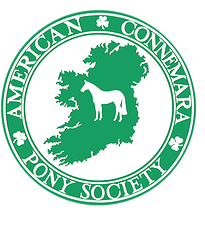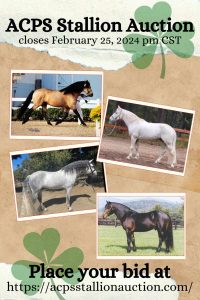There have been ponies in Connemara since at least 1399, the date of the first written account. They have been described over the centuries in both glowing and derogatory terms. They were said to dot the hills and be “fleeter than deer”. They were also described as being a “fine hors…..nimble, light, pleasant, and apt to be taught.” There were other descriptions which said they were “scruffy little horses”. No doubt there were both attractive and scruffy ponies in Connemara!
By 1900 many breeds had been brought to the West of Ireland with the idea of improving the ponies there. The influx of various breeds, Andalusians, Barbs, Arabs, Hackneys, Welsh Cobs, and draught horses, may or may not have improved the ponies.
One thing can be said for sure, many varied types evolved! Whatever the type, however, only the hardiest and surest of foot survived in the harsh conditions of Connemara.
Connemara Pony Breeders’ Society is Founded
During the great famine in the 1800’s many of the native ponies of Connemara were lost and people began to worry that they would disappear. Thus interest in ways to preserve this valuable breed arose. At a meeting of people who wanted to preserve the best characteristics of the ponies, Father White, who was to become the first President of the Connemara Pony Breeders Society, said, “…the ponies can go anywhere, live anywhere, do not require luxurious food, have remarkable staying power and are a much better value than a bigger horse. On the mountain side, in the valleys or on the hard rocky surface they are equally effective.”
A formal organization to standardize and preserve these good characteristics was suggested.
Thus, in 1923 the Connemara Pony Breeders’ Society (CPBS), was founded and the first inspections held in 1924. The goal of the CPBS was to develop and document a breed whose approved individuals would reliably reproduce themselves. The purpose of the inspections was to establish a Stud Book which recognized and registered ponies exhibiting the hardiest and most typical characteristics of the native pony of Connemara.
The First Stud Book
The first Stud Book clearly stated the purpose of the CPBS and its inspection program:
“The publication of a Connemara Pony Stud book is an attempt to foster and develop, on systemic lines, a native breed which has existed for centuries, the merits of which are recognized not only in Ireland but outside of it. In Connemara… breeding mares work throughout the year; consequently, a form of natural selection is continually at work. Awkward, ill-tempered, or badly constituted animals are of little or no value to the Connemara farmer… It will be understood, therefore, that only the very best can be retained for breeding which accounts for the fact that although unsuitable foreign blood has been introduced from time to time, its influence on the permanent breeding stock has been slight… The aim of the Society is to secure by CONTINUED selection and careful fostering a breed of ponies uniform in size and shape, suitable for general utility purposes and which, when bred from under favorable conditions, would be capable of producing high class riding animals.”
At the first inspection, 249 mares and 35 stallions were presented. Only 65 mares and 5 stallions were accepted — about 25% of the mares and 15% of the stallions.
In spite of this low rate of selection, people kept bringing promising ponies to be inspected and those best meeting the breed standard went into the Stud Book.
For many years quality ponies of unregistered ancestry were admitted to the CPBS Stud Book, but ponies of registered stock were also inspected. In 1942 it was decided that only mares younger than 15 would be inspected, limiting the numbers somewhat. In 1964, the Stud Book was closed. Only progeny of animals already in the Stud Book were eligible for inspection and only approved animals were registered.
From that date forward inspections were carried out every year as part of ongoing educated selection and careful fostering of a breed of ponies capable of performing a variety of useful purposes and successfully carrying their riders in many disciplines.




